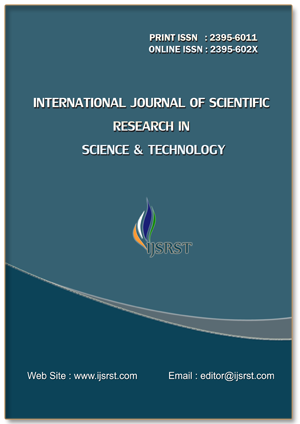Accelerating Pharma Innovation by Ai with Computational Models
DOI:
https://doi.org/10.32628/IJSRST2512120Keywords:
Drug discovery, Artificial Intelligence (AI), In Silico model, ACAT modelAbstract
Complex biological activity is the straightforward explanation for the pharmaceutical industry's notable innovation drop in recent decades. Drug discovery, as we all know, is a complex, unsafe, expensive and time-consuming process. It typically takes 10- 12 years to get a medicine onto the market. However, with the use of computer-aided drug development, computational chemistry, and artificial intelligence (AI), we can now speed up this process. The entire process of finding and developing new drugs could become more efficient with the use of artificial intelligence (AI). Here Most marketed drugs are administered orally, despite the complex process of oral absorption that is difficult to predict. The interaction of numerous processes that rely on both chemical and physiological features determines oral bioavailability. In an effort to mechanistically depict the process of oral absorption, computational oral physiologically-based pharmacokinetic (PBPK) models, such as the Advanced Compartmental Absorption and Transit Model (ACAT), have become a useful tool for integrating these variables. These models forecast the pharmacokinetic behaviour of medications in the human body using data from in vitro tests. This review focusses on the rapid development of new drug discovery utilising the Advanced Compartmental Absorption and Transit Model (ACAT) for oral absorption in order to reduce the number of phase II and phase III clinical trials.
Downloads
References
Development., T. C. ((2014).). Cost to Develop and Win Marketing. Approval for a New Drug Is $2.6 Billion.
Vamathevan, J. C. ((2019).). Applications of machine learning in drug discovery and development. Nature Reviews Drug Discovery, 18(6), 463-477. DOI: https://doi.org/10.1038/s41573-019-0024-5
Gashaw I, E. P. (2012; 17:S24-S30. ). What makes a good drug target. . Drug Discovery Today,. DOI: https://doi.org/10.1016/j.drudis.2011.12.008
(Jan. 28. 2008.). Clinical trial Wikipedia. , the free encyclopedia.
Barile FA. (2008.). Pri. nciples of Toxicological Testing. CRC Press, USA.
Friedman LM, F. C. ( 2010.). Fundamentals of clinical trials. . 4th ed. New York: Springer Science and Business Media LLC.
(2013.). A comprehensive guide to toxicology in preclinical drug development. Faqi AS Waltham, MA: Elsevier.
Fitzpatrick S. (2005). The clinical trial protocol. . Buckinghamshire: Institute of Clinical Research.
DeMets, D. F. (. (2010)). Fundamentals of Clinical Trials. 4th Edition, Springer, Berlin.
Lengauer T, L. C. ( (2004).). Novel technologies for virtual screening. . Drug Discov Today 9: 27–34. DOI: https://doi.org/10.1016/S1359-6446(04)02939-3
Whittaker PA. ((2003).). What is the relevance of bioinformatics to pharmacology? Trends Pharmacol Sci 24: 434–439. DOI: https://doi.org/10.1016/S0165-6147(03)00197-4
Agoram B, W. W. (2001). Predicting the impact of physiological and biochemical processes on oral drug bioavailability. Adv Drug Deliv Rev. ;50(Suppl 1):S41–67. DOI: https://doi.org/10.1016/S0169-409X(01)00179-X
6. Lobenberg R, e. a. (2000). Dissolution testing as a prognostic tool for oral drug absorption: dissolution behavior of glibenclamide. Pharm Res. ;17:439–44.
7. Okumu A, D. M. (2008). Dynamic dissolution testing to establish in vitro/in vivo correlations for montelukast sodium, a poorly soluble drug. Pharm Res. ;25:2778–85. DOI: https://doi.org/10.1007/s11095-008-9642-z
Agatonovic-Kustrin S. and Beresford R.:. (2000,). Basic concepts of artificial neural network (ANN) modeling and its application in pharmaceutical research,. J. Pharmaceut. Biomed., 22, 717-727. DOI: https://doi.org/10.1016/S0731-7085(99)00272-1
7. Agrawal P.:. (2018,). Artificial Intelligence in Drug Discovery and Development,. J. Pharmacovigil., 6, 1000e173. DOI: https://doi.org/10.4172/2329-6887.1000e173
Merino A., B. A. (2010). Drug profiling: knowing where it hits, . Drug Discov. Today, , 15, 749-756. DOI: https://doi.org/10.1016/j.drudis.2010.06.006
4. Lavecchia A.:. (2015). Machine-learning approaches in drug discovery: methods and applications,. Drug Discov. Today, , 20, 318-331. DOI: https://doi.org/10.1016/j.drudis.2014.10.012
Achanta A. S., K. J. ( 1995). Artificial neural networks: implications for pharmaceutical sciences,. Drug Dev. Ind. Pharm.,, 21, 119-155. DOI: https://doi.org/10.3109/03639049509048099
Ferrero E., D. I. ( 2017). In silico prediction of novel therapeutic targets using gene–disease association data,. J. Transl. Med.,, 15, 182. DOI: https://doi.org/10.1186/s12967-017-1285-6
Olivecrona M., B. T. (2017). Molecular de novo design through deep reinforcement learning,. J. Cheminformatics, , 9, 48. DOI: https://doi.org/10.1186/s13321-017-0235-x
Coley C.W., G. W. (2018). Machine learning in computer-aided synthesis planning,. Acc. Chem. Res., , 51, 1281-1289. DOI: https://doi.org/10.1021/acs.accounts.8b00087
Unterthiner T., M. A. (2014). Deep learning as an opportunity in virtual screening,. In Proceedings of the deep learning workshop at NIPS, , 27, 1-9.
Lyu J., W. S. ( 2019,). Ultra-large library docking for discovering new chemotypes, . Nature, 566, 224-229. DOI: https://doi.org/10.1038/s41586-019-0917-9
Stegemann S., L. F. (2007, ). When poor solubility becomes an issue: from early stage to proof of concept, . Eur. J. Pharm. Sci., 31, 249−261. DOI: https://doi.org/10.1016/j.ejps.2007.05.110
Jorgensen W. L. and Duffy E.M.:. (2000). Prediction of Drug Solubility from Monte Carlo Simulations,. Bioorg. Med. Chem. Lett., , 10, 1155−1158. DOI: https://doi.org/10.1016/S0960-894X(00)00172-4
9. Yang S. S., L. W. ( 2009, ). QSPR Study of n-Octanol/Water partition coefficient of some aromatic compounds using support vector regression,. QSAR Comb. Sci.,28, 175−182. DOI: https://doi.org/10.1002/qsar.200810025
0. Tetko I. V.:. (2001). Associative Neural Network. Neural Process. Knowledge management and its link to artificial intelligence, Expert Syst. Appl.,, 20, 1-6. DOI: https://doi.org/10.1016/S0957-4174(00)00044-0
Dixon S. L., D. J. (2016,). AutoQSAR: An automated machine learning tool for best-practice quantitative structure−activity relationship modeling,. Future Med. Chem., 8,1825−1839. DOI: https://doi.org/10.4155/fmc-2016-0093
8. Klucznik T., M.-K. B. ( 2018). A.: Efficient syntheses of diverse, medicinally relevant targets planned by computer and executed in the laboratory,. J. Chem.,, 4, 522-532. DOI: https://doi.org/10.1016/j.chempr.2018.02.002
Downloads
Published
Issue
Section
License
Copyright (c) 2025 International Journal of Scientific Research in Science and Technology

This work is licensed under a Creative Commons Attribution 4.0 International License.








